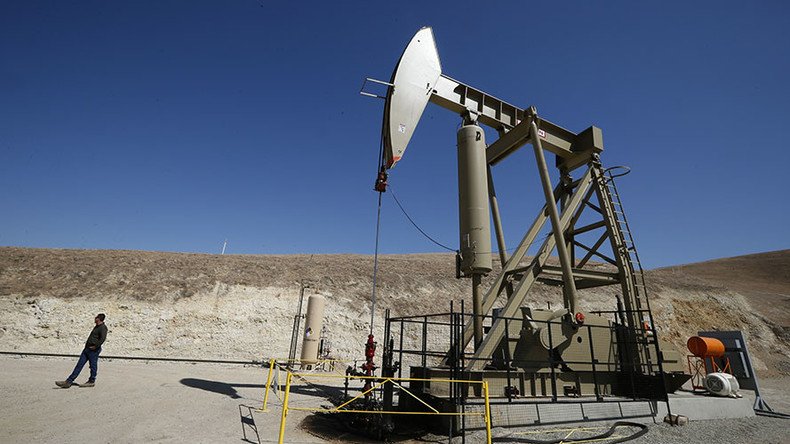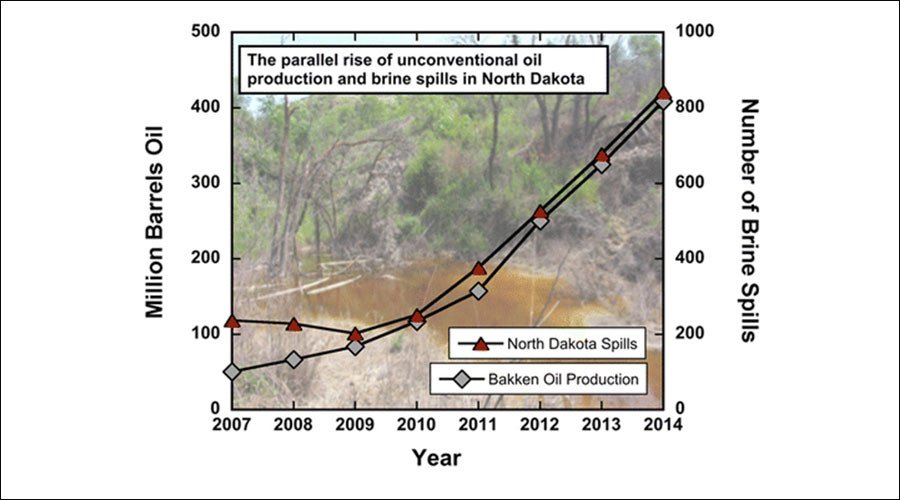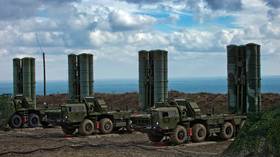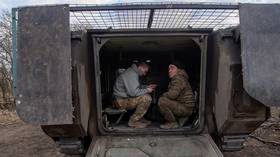North Dakota contaminated with radioactive materials from fracking – study

A new study has revealed significant contamination of soil and water in North Dakota from radioactive materials, heavy metals and corrosive salts as a result of oil and gas wastewater spills.
The Duke University research, published in Environmental Science and Technology, highlights the possible health implications for humans and wildlife from the 3,900 reported brine spills in the region since the rise of fracking in 2007.
READ MORE: “Bloody crazy”: River near fracking site bursts into flames in Australia (VIDEO)
Some 9,700 wells have been drilled in North Dakota's Bakken shale and Bottineu oilfield region in the last 10 years, Truthout reports.
“Unlike other areas in the U.S. where decades of conventional oil and gas exploration have generated a legacy of contamination, the exploration rates of conventional oil and gas in North Dakota were significantly lower than recent unconventional operations,” the Duke study says.
“Therefore, recent OGW [oil and gas wastewater] spills are directly associated with recent unconventional oil extraction.”

Scientists tested water and soil samples near four spill sites in July 2015 and found in some cases, levels of radioactive and toxic materials were higher than federal drinking water standards.
The four sites include two of the biggest spills in the state’s history, including a spill of 2.9 million gallons in January 2015, and two areas in which smaller spills occurred in 2011.
READ MORE: ‘US lead industry must be held accountable’ – healthy housing scientist to RT
“The magnitude of spills that we see in North Dakota I haven’t seen elsewhere,” said Avner Vengosh, a Duke University professor who has been studying the effects of hydraulic fracturing since 2010 in several oil-producing states.
Researchers found high levels of ammonium, selenium, lead and other toxic contaminants – the levels of selenium – a radioactive element – were 35 times higher than the federal threshold set “for freshwater aquatic life”.
Particularly high levels of radium contamination were recorded in the ground downstream from where the spills started, which researchers say indicates radioactive materials from the spills were soaking into the ground.
“Overall, our data show that the Bakken brines are enriched in numerous toxic elements and their release to the environment could directly affect the quality of the impacted water,” the study warns.
READ MORE:Unconventional no more: Two-thirds of natural gas comes from fracking
The scientists also said that poor clean up efforts are contributing to the long-term “legacy of contamination".
"Unlike spilled oil, which starts to break down in soil, these spilled brines consist of inorganic chemicals, metals and salts that are resistant to biodegradation," lead author Nancy Lauer told Desmog. "They don't go away; they stay."













